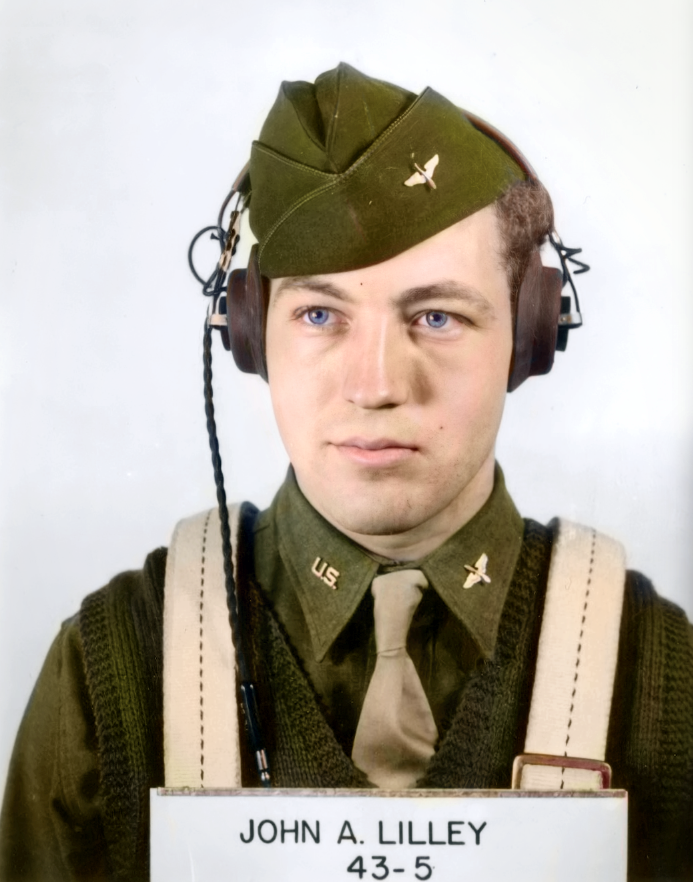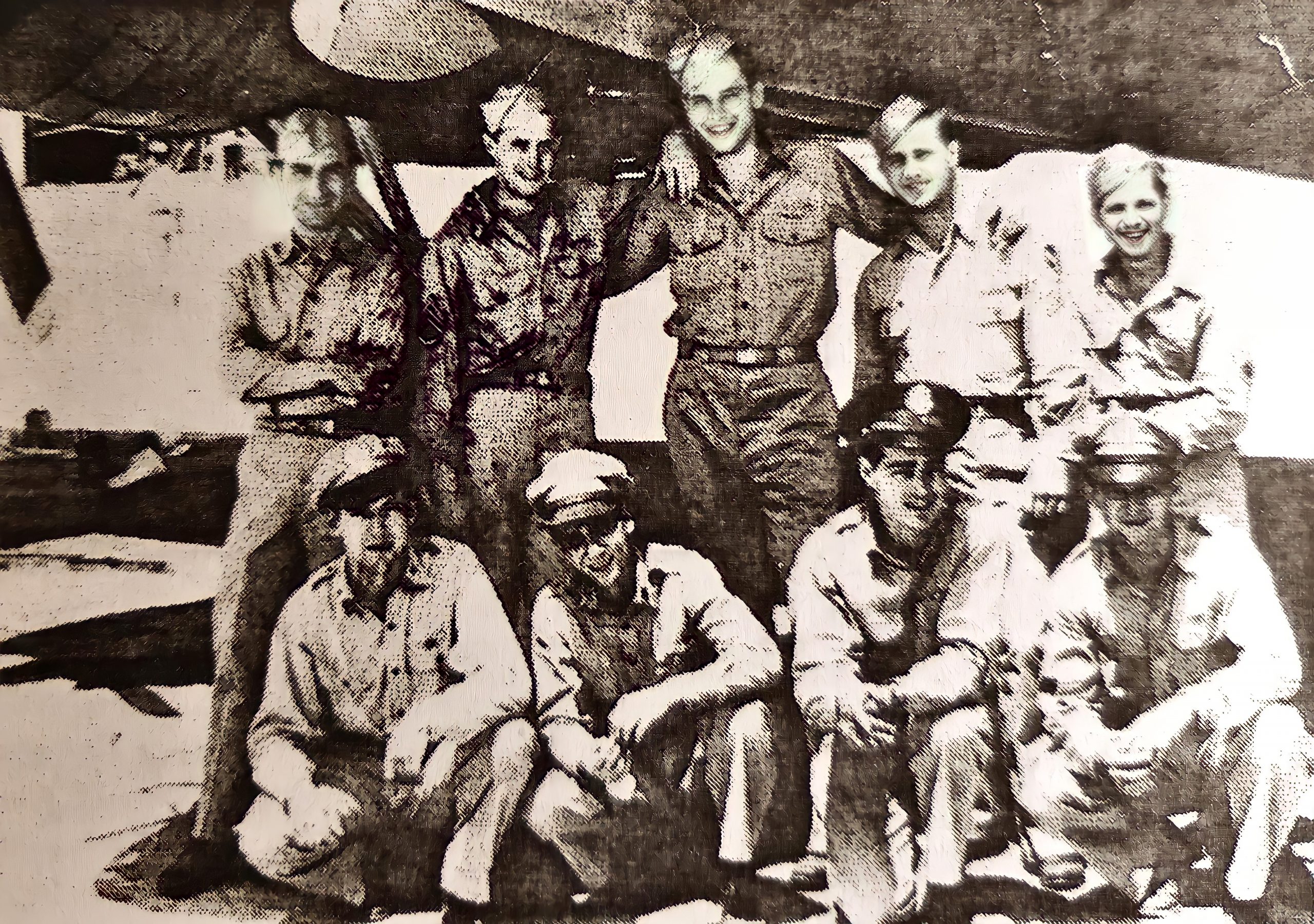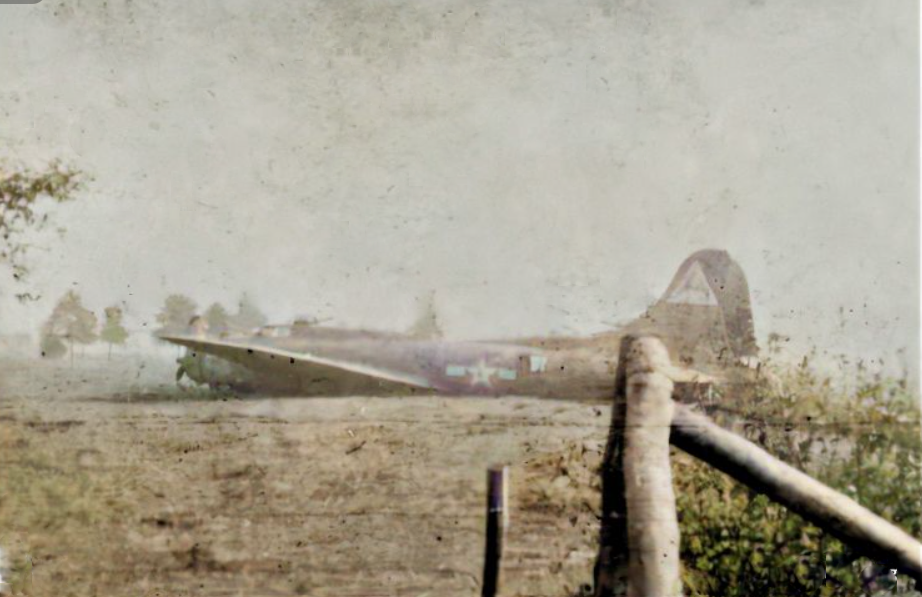On Sunday 10 October 1943, the Boeing B-17G, nicknamed Tennessee Toddy, took off from Bassingbourn, England, for a bombing mission in Münster, Germany. The crew of ten men was under the assumption that earlier engine problems had been resolved, but they were wrong . On their way to Münster, the engine first seemed to perform fine, but it soon appeared that one motor got overheated and it was switched off. After release of the bombs, one of the aircraft’s engines was hit by German fire – which meant the loss of that motor as well. In their efforts to restart the motor that had not been functioning properly earlier, this one caught fire. The B-17G Tennessse Toddy could no longer fly in formation with the other aircraft. A German Messerschmitt Bf 110 G-2, coming from Lippspringe airfield, was on the tail of the Tennessee Toddy. Over Markelo (NL), at an altitude of just 20,000 feet (about 6100 meter) pilot Verrill gave the command ‘Bail out’. The crew jumped, but the parachute of bomber John Lilley opened too quickly.
 John A. Lilley
John A. Lilley
Lilley got stuck to the elevator, was dragged along and swept through the trees along the road near De Gaete 9 in Broekland (municipality of Apeldoorn). Members of the Beekman family who lived in that house, carried him into their farm. Lilley opened his eyes for a moment, but he died soon after. He was buried at the Heidehof cemetery in Ugchelen, Apeldoorn. After the war, he was reinterred at the Netherlands American Cemetery and Memorial in Margraten, Limburg. His grave is situated in Lot B, Row 19, Grave 19. Lilley was born on 27 October 1922 in Lapeer, Michigan, and passed away on 10 October 1943. He was awarded with the Purple Heart.
The pilot of the allied aircraft managed to land the damaged aircraft safely and left the aeroplane. The Germans captured the pilot as well as the rest of the crew. Crew member Arthur Horning was the only crew member that managed not to become a Prisoner of War. He took advantage of the Comète network, a route that helped allied soldiers to get to Spain, via Belgium and France. (Spain remained neutral during World War II.) Once in Spain, Horning was out of the hands of the Germans and eventually managed to return to England.
After his landing in the vicinity of Elsen near Markelo, Horning was assisted by many helpful people. He remained in France for a while and had quite a few adventures. One evening he enjoyed a dinner by candle light on a well laid table. He thought he was getting rabbit meat served to celebrate the occasion. Afterwards, his host asked how the ‘lapin de gouttière’ had tasted. The host pointed at his wife’s cat. Horning suddenly realized what their meal had been: a ‘rabbit’ from the gutter.
Together with Diane (real name: Amanda Stassart), Horning took the train from Lille to Paris. However, he did not yet have a proper identity card. A German supervisor walked through the aisle to check papers. Horning was very afraid, but the twenty-year-old Diane nestled in his lap and started to kiss him. The supervisor did not bother the amorous couple. Horning reached the Spanish border on December 23, 1943. His group had to cross the border river Bidassoa between France and Spain. One group member and one ‘helper’ drowned during the risky crossing. Horning‘s mother got news from Spain that her son was alive and safe. On January 26, 1944, the group of allied airmen arrived in Gibraltar, and were flown to London three days later. Horning had to report to a reception centre in Brook Street where he was extensively interrogated, as the British were afraid of German infiltration. On March 7, 1944, Horning left England and returned to the US.
After his return to England, Arthur Horning was not always respectfully treated, but he would not waste many words on it. He ended his flight history as follows:
‘Everything I have experienced made me another person. I now have less trust in the government, considering the settlement of my case after my return. But I do have respect for all the people who risked their lives for me, or lost theirs for my sake. With respect, I therefore take off my hat. If you ever need me, just let me know.
May the Lord shine his countenance upon you.’

The Tennessee Toddy’s crew:
Pilot 2nd. Lt. E.L. Verrill
Co-Pilot 2nd. Lt. J. Rose
Navigator 2nd. Lt. A.J. Horning
Bombardier 2nd. Lt. J.A. Lilley
Engineer Sgt. R.M. Jackson
Radio Operator Sgt. L.R. Repp
Air gunner (left) Sgt. P.A. Loorman
Air gunner (right) Sgt S.E. Lepkowski
Additional gunner Sgt. G.L. Taft
Rear gunner Sgt. R.D. De Ghetto
